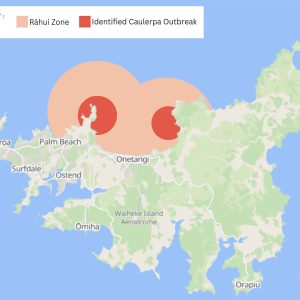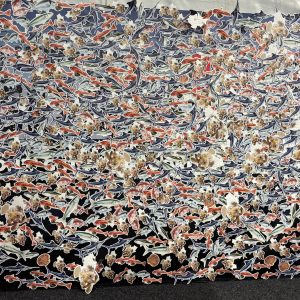It’s fair to say the Hauraki Gulf Marine Park is turning to shit. Quite literally. Hundreds of litres of raw sewage entered the Waitematā Harbour every second after a 13-metre sinkhole caused the blockage of a main wastewater pipe in downtown Auckland. Do you think a marine reserve would be an effective way to solve this issue?
It doesn’t take a scientist to comprehend that a marine reserve would not be an appropriate tool in this instance. The same applies when it comes to managing our fisheries. Land-based pollution and sedimentation entering the Hauraki Gulf Marine Park cannot be mitigated by marine protection alone.
Up until November 1st you have the opportunity to comment on the Marine Protection Bill that enables the implementation of 19 marine protected areas in the Hauraki Gulf Marine Park. LegaSea is already working with other organisations to promote an alternative proposal called Ahu Moana.
Ahu Moana is a community-based solution that encompasses iwi and communal aspirations, allowing for continued use of an area with controls to suit local conditions. After all, the ultimate success comes from community-driven initiatives.
For example, Ngāti Whātua Ōrākei take their responsibility as guardians of the environment seriously, within days of the blockage they placed an emergency rāhui across the Waitematā Harbour. They did so because they wanted to protect the taiao [environment] and the people.
A similar intervention was led by Ngāti Manuhiri who, in 2022, came alongside local organisations and placed a rāhui from Bream Tail down to Okura River mouth in response to the depletion of local scallop beds. The rāhui was to protect scallops from harvesting by recreational, commercial, and customary fishers.
This action triggered a formal response by Fisheries New Zealand, with the Minister for Oceans and Fisheries eventually closing the entire scallop fishery on the northeast coast.
Mana whenua and community groups have demonstrated strong leadership in applying local solutions, providing protection in the absence of officials’ action while negating the arguments used to justify marine reserves.
It’s concerning that the proposed 19 marine protected areas are expected to address over a century of damage in the Hauraki Gulf caused by bottom trawling and other destructive fishing methods. To effectively address the root causes of depletion and loss of biodiversity, the new Marine Protection Bill being considered by the Environment Select Committee must include a community-based tool such as Ahu Moana.
We need public pressure to show officials our communities want purposeful restoration of the life and waters of the Hauraki Gulf Marine Park. We want restored abundance and a fair go for all Kiwis who enjoy access to the Gulf.
If you are concerned about the inadequate proposals to manage our moana, write a submission to the Environment Select Committee before November 1 and tell them you want effective marine protection and fisheries management including Ahu Moana for our communities.





